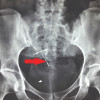
 IJCP Editorial Team
IJCP Editorial Team
TIPS AND DIPS: HVOTO
Management of hepatic venous outflow tract obstruction (HVOTO) can be categorized into four steps: (1) Symptomatic treatment – Treatment of varices. (2) Relieving the obstruction – Surgery/Tx/Angiographic interventions. (3) Treatment of etiology – Hypercoagulable state, anticoagulation. (4) Regular follow-up for HCC.
In cirrhosis, classic transjugular TIPS are used to create a shunt. In HVOTO, a shunt can be made via extended TIPS or portocaval shunt. However, it has been seen that TIPS has some challenging steps, such as accessing the portal vein, which can be resolved using some methods like: Blind fluoroscopic method; use of CO2 wedged hepatic venography; marker-wire method; indirect portography method after injecting dense contrast into splenic artery/superior mesenteric artery; ultrasound technique; intravascular ultrasound; combined fluoroscopy and ultrasound.
For example, it has been seen that getting access to PV under ultrasound guidance is a safer method as hepatic parenchyma gives a window while creating a shunt between inferior mesenteric vein and inferior vena cava. Similarly, it has been seen that percutaneous sonographic guidance is helpful in TIPS in Budd-Chiari syndrome.

IJCP Editorial Team
Comprising seasoned professionals and experts from the medical field, the IJCP editorial team is dedicated to delivering timely and accurate content and thriving to provide attention-grabbing information for the readers. What sets them apart are their diverse expertise, spanning academia, research, and clinical practice, and their dedication to upholding the highest standards of quality and integrity. With a wealth of experience and a commitment to excellence, the IJCP editorial team strives to provide valuable perspectives, the latest trends, and in-depth analyses across various medical domains, all in a way that keeps you interested and engaged.














Please login to comment on this article